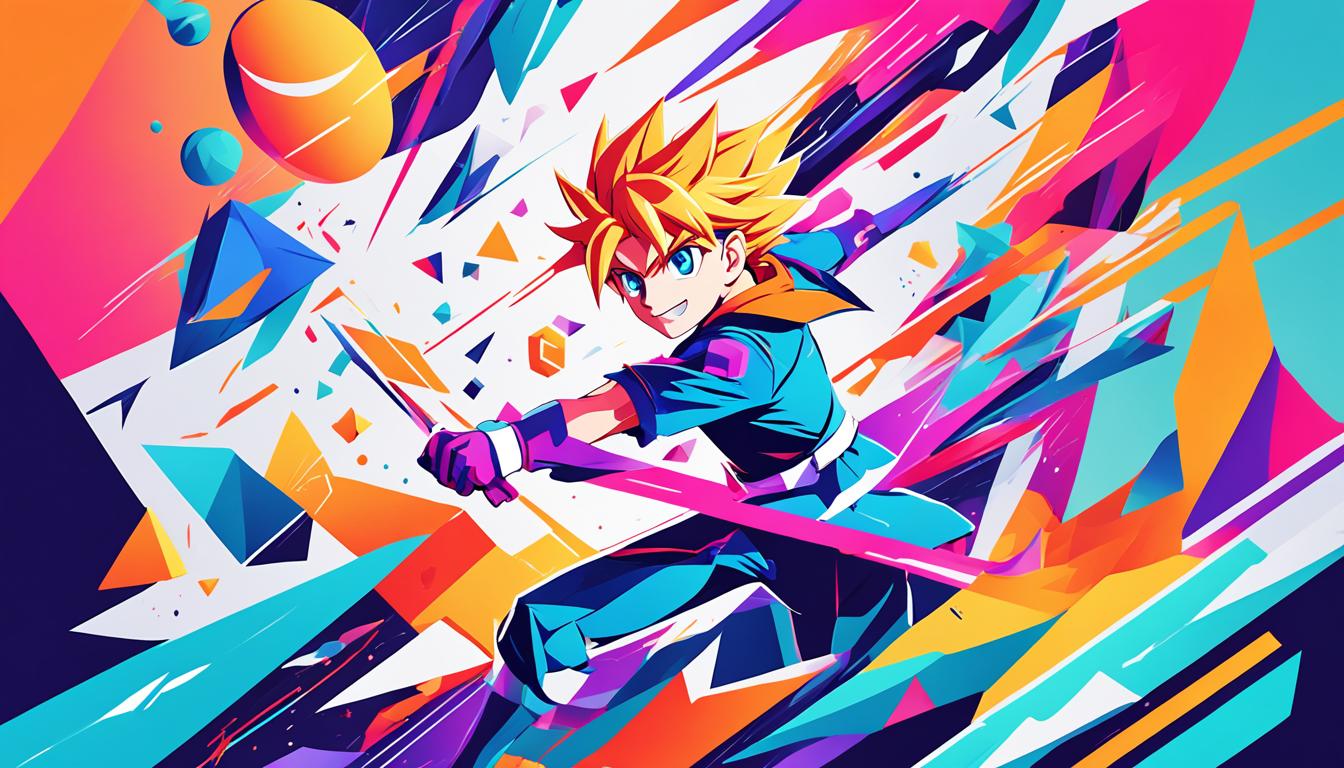
Crafting Your Startup’s Brand Identity from Scratch

“Your brand is the single most important investment you can make in your business.”
– Steve Forbes
When it comes to launching a new startup, crafting a strong brand identity is a crucial step towards success. Your brand is the face of your business, the way you communicate who you are and what you stand for to the world. It’s what sets you apart from the competition and attracts customers to your products or services.
Building a robust brand identity from scratch requires careful planning and strategic execution. From defining your core values and mission to creating a distinctive visual identity, every aspect of your brand should align with your business goals and resonate with your target audience.
In this article, we will explore the essential strategies and steps to help you craft a compelling brand identity for your startup. By following these principles of brand positioning, you can establish a powerful and enduring brand that captivates your audience and drives your business forward.
Key Takeaways:
- Crafting a strong brand identity is essential for startups to establish trust, differentiation, and attract customers.
- Define your core values and mission as the foundational elements of your brand narrative.
- Create a distinctive visual identity through a carefully crafted logo, color palette, and typography.
- Craft a compelling brand message that communicates your unique value proposition and connects with your target audience.
- Create a memorable customer experience by prioritizing user experience and exceptional customer service.
Define Your Core Values and Mission
Before diving into the visual aspects of your startup’s brand identity, it is crucial to clearly define your core values and mission. These foundational elements serve as the guiding principles that shape the identity and positioning of your brand. By articulating what your startup stands for, you lay the groundwork for a compelling brand narrative that resonates with your target audience.
Core values represent the fundamental beliefs of your startup and serve as a compass for decision-making. They are the principles that guide your actions and define the character of your brand. When determining your core values, consider what is truly important to your startup and what drives your team’s behavior and interactions.
Meanwhile, your mission statement communicates the purpose and direction of your startup. It outlines the goals and values of your organization, encapsulating the impact you aim to create in the world. By crafting a clear and concise mission statement, you provide a sense of direction to your team and stakeholders.
Your core values and mission statement work together to create a cohesive and authentic brand identity. They form the foundation upon which all other branding elements, such as the visual identity and brand message, are built. A well-defined set of core values and a compelling mission statement establish a strong brand narrative that resonates with your audience and sets your startup apart from competitors.
Core Values and Mission Examples
| Company | Core Values | Mission Statement |
|---|---|---|
| Apple Inc. |
|
“Apple designs Macs, the best personal computers in the world, along with OS X, iLife, iWork and professional software. Apple leads the digital music revolution with its iPods and iTunes online store. Apple has reinvented the mobile phone with its revolutionary iPhone and App Store, and is defining the future of mobile media and computing devices with iPad.” |
| Patagonia |
|
“Build the best product, cause no unnecessary harm, use business to inspire and implement solutions to the environmental crisis.” |
|
“To organize the world’s information and make it universally accessible and useful.” |
By examining the core values and mission statements of successful companies, you can gain inspiration and insight into how these elements contribute to their brand narrative and overall success.
Create a Distinctive Visual Identity
In order to establish a strong brand identity, startups must prioritize the creation of a distinctive visual identity. This includes designing a carefully crafted logo that effectively captures the essence of the brand. A well-designed logo not only visually represents the company but also serves as a memorable symbol that customers can easily associate with the brand.
When designing a logo, it’s important to consider various factors such as color psychology, simplicity, and scalability. A visually appealing and impactful logo can leave a lasting impression on customers, helping to build brand recognition and trust. Here is an example of a visually stunning logo that reflects the brand personality:
Another key aspect of visual identity is the consistency in the color palette and typography. Selecting a cohesive color palette that aligns with the brand’s personality and target audience ensures visual coherence across different platforms and touchpoints. The right combination of colors can evoke specific emotions and influence the way customers perceive the brand. Similarly, typography plays a vital role in communicating the brand’s tone and style. Choosing fonts that are legible, unique, and reflective of the brand’s personality further enhances the visual identity.
To showcase the importance of these elements, below is a table that highlights the different elements of visual identity and their impact on brand perception and recognition:
| Visual Identity Element | Key Considerations | Impact on Brand |
|---|---|---|
| Logo Design | Color, Shape, Simplicity, Scalability | A distinctive and visually appealing logo helps build brand recognition and trust. |
| Color Palette | Consistency, Emotion, Target Audience | A cohesive color palette reinforces brand identity and influences customer perception. |
| Typography | Legibility, Personality, Style | Choosing the right fonts enhances brand communication and visual consistency. |
In summary, creating a distinctive visual identity is crucial for startups looking to establish a strong brand presence. By investing in logo design, maintaining consistency in the color palette and typography, and ensuring visual coherence across various touchpoints, startups can effectively communicate their brand’s personality and values to their target audience.
Craft a Compelling Brand Message
When it comes to branding, one of the most critical aspects for startups is crafting a compelling brand message. A brand message encapsulates the essence of your startup, communicates your unique value proposition, and establishes a connection with your target audience. By articulating your brand message with clarity and impact, you can effectively differentiate your startup from competitors and leave a lasting impression on your customers.
To ensure consistency and coherence, it is crucial to maintain a consistent brand message across all your communication channels. Whether it’s your website, social media platforms, or marketing materials, a consistent brand message reinforces your startup’s identity and helps build trust with your audience. It is essential to convey your brand message with consistency and authenticity to establish a strong emotional connection with your customers.
“Your brand message should reflect your startup’s identity, unique value, and differentiation.”
One way to strengthen your brand message is by identifying your unique selling proposition (USP). Your USP is what sets you apart from your competitors and gives your startup a competitive edge. By emphasizing your USP in your brand message, you highlight the distinct value you offer, making it easier for your target audience to understand why they should choose your startup over others.
Consistent communication is also vital in reinforcing your brand message. Regularly engage with your audience through blog posts, social media updates, newsletters, and other forms of content marketing. By consistently communicating your brand message, you keep your startup top of mind and build brand recognition over time.
Example of a Compelling Brand Message
“At XYZ Tech, we’re passionate about revolutionizing the way businesses leverage cutting-edge technology. With our innovative solutions and expert team, we empower businesses to unlock their full potential and thrive in the digital age. Discover how XYZ Tech can transform your business today!”
By crafting a compelling brand message and maintaining consistent communication, you can create a strong brand identity for your startup and foster meaningful connections with your target audience. A well-crafted brand message, along with a unique selling proposition and consistent communication, will help elevate your startup’s visibility and establish it as a trusted and reputable player in your industry.

Create a Memorable Customer Experience
When it comes to building a strong brand, startups must prioritize creating a memorable customer experience. Every interaction a customer has with your brand, from the moment they visit your website to the packaging of your products, contributes to their perception of your brand. By focusing on user experience, delivering exceptional customer service, and fostering positive brand perception, startups can create a lasting impression on their customers.
1. User Experience
In today’s digital age, the user experience (UX) plays a crucial role in shaping customers’ perceptions of a brand. Startups should invest in creating a seamless and enjoyable customer journey across all touchpoints. This includes intuitive website navigation, optimized mobile responsiveness, and a user-friendly interface.
“A positive user experience not only enhances customer satisfaction but also increases the likelihood of repeat visits and referrals. It’s an opportunity for startups to differentiate themselves from competitors and establish a strong connection with their target audience.” – Sarah Johnson, UX Designer
2. Exceptional Customer Service
Customer service is a critical component of building a strong brand. Startups should prioritize delivering exceptional customer service at every touchpoint. This involves training the team to be responsive, empathetic, and solution-oriented when addressing customer inquiries, concerns, or issues.
“Providing excellent customer service not only builds trust and loyalty but also creates positive brand associations. When customers have a great experience with your brand, they are more likely to become brand advocates, recommending your products or services to others.” – Mark Anderson, Customer Service Manager
3. Positive Brand Perception
By focusing on user experience and delivering exceptional customer service, startups contribute to a positive brand perception. Customers who have a seamless and enjoyable experience with a brand are more likely to view it positively and develop a strong emotional connection. This positive brand perception leads to increased customer loyalty and advocacy.
Maintaining a Consistent Online Presence
Leveraging social media as a powerful tool for brand reinforcement and maintaining a consistent visual identity across platforms is essential. In the digital age, social media plays a pivotal role in connecting with the target audience and building brand loyalty.
By utilizing various social media platforms, startups can cultivate their brand image, engage with customers, and expand their reach. Consistency is key in social media branding. It involves aligning the brand’s messaging, tone, and visual elements across all platforms to create a cohesive and recognizable brand identity.
The website, on the other hand, serves as the digital storefront where potential customers can learn more about the startup and its offerings. A well-designed website that reflects the brand identity cohesively helps establish credibility and trust.
When it comes to website design, consistency is vital. Startups should pay attention to the layout, imagery, and content to ensure visitors easily grasp the brand story and navigate the offerings. Consistency in design elements such as color palette, typography, and logo placement enhances brand recognition and strengthens the overall brand perception.
Here’s an example of how social media branding and website design can work together:
| Social Media Platform | Consistent Branding Elements |
|---|---|
| Eye-catching visuals, consistent use of brand colors and fonts, engaging captions that reflect the brand’s personality | |
| Branded cover photo, cohesive visual content style, regular updates that align with the brand’s narrative | |
| Website | Consistent logo placement and size, cohesive imagery that reflects the brand, easy navigation with a consistent layout |
By maintaining a consistent online presence, startups can reinforce their brand identity, foster customer trust, and create a memorable impression. Consistency in social media branding and website design helps establish brand recognition and enhances the overall user experience.
Conclusion
Building a strong brand from scratch requires thoughtful planning and ongoing commitment. As a startup, it is crucial to focus on defining your core values and mission. These foundational elements shape your brand identity and position you in the market. By clearly articulating what you stand for, you lay the groundwork for a compelling brand narrative that resonates with your target audience.
In addition to defining your values, creating a distinctive visual identity is essential. Design a carefully crafted logo that encapsulates the essence of your brand. Establish consistency in your color palette and typography to create a seamless visual identity that is recognizable across all touchpoints.
Crafting a compelling brand message is equally important. Clearly communicate your unique value proposition and differentiation. Consistency in brand messaging across all communication channels helps define your identity and connect with your audience.
As you develop your brand, don’t forget to prioritize customer experience. By creating a memorable journey from website navigation to product packaging, you enhance positive brand perception. Exceptional customer service is also key in building a strong brand. Ensure your team is trained to deliver a positive experience at every touchpoint, showcasing your commitment to customer satisfaction.
Lastly, maintaining a consistent online presence plays a critical role in brand establishment. Leverage social media to reinforce your brand and ensure you maintain a consistent visual identity across platforms. Treat your website as a digital storefront that reflects your brand cohesively, paying attention to layout, imagery, and content.
By following these strategies, you can establish a powerful and enduring brand identity that resonates with your target audience. Building a successful brand takes time and effort, but with careful planning and ongoing commitment, your startup can create a brand that stands out in the market.





























